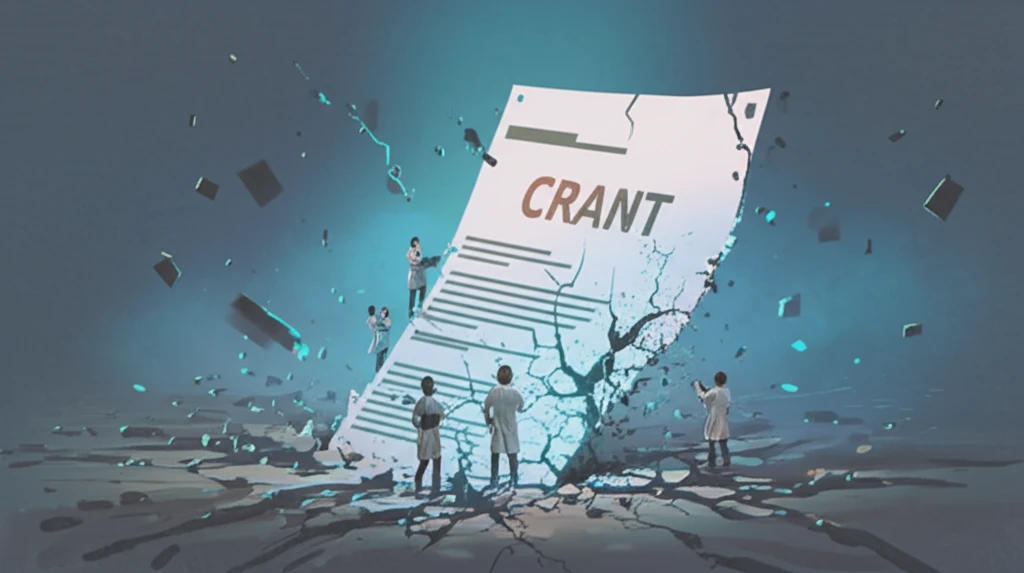
The Great Talent Leak: How Funding Gaps Drain the Scientific Workforce
"New research reveals the hidden costs of NIH grant delays—and who pays the price."
For decades, federal funding has fueled university research, driving innovation and progress across countless fields. The vision, articulated in Vannevar Bush’s 1945 report, aimed to ensure stable funding for long-term scientific endeavors. Yet, the reality of today's grant system often falls short, exposing researchers to unpredictable funding cycles and potential interruptions.
These funding gaps, exacerbated by boom-bust cycles like the NIH’s in the early 2000s and the perennial uncertainties of federal budgeting, create significant instability. The grant application and renewal processes themselves can be lengthy and unpredictable, stretching anywhere from 8 to 20 months. This financial insecurity doesn't just affect research projects; it has a tangible impact on the lives and careers of the scientists and researchers who depend on these funds.
A groundbreaking study, utilizing comprehensive earnings and tax records linked to university transaction data, sheds light on the far-reaching consequences of these funding delays. The findings reveal a concerning trend: interruptions in NIH grant funding trigger a 'talent leak,' pushing valuable scientists out of research, out of the country, and even out of science altogether. This article explores the key findings of this research, highlighting the hidden costs of funding gaps and their implications for the future of the scientific workforce.
The Ripple Effect: How Funding Delays Impact Job Placement

The research pinpoints a critical threshold: a funding interruption of more than 30 days. This seemingly short delay can have a significant impact, particularly for personnel working in labs dependent on a single NIH R01 research grant. These labs, often lacking the financial cushion of multiple grants, are especially vulnerable.
- Immediate Impact: A 3% increase in the likelihood of non-employment in the U.S. for personnel in labs with single NIH R01 grants.
- Long-Term Exodus: Approximately half of those affected by non-employment leave the U.S. permanently.
- Publication Decline: A dramatic 90% decrease in the likelihood of publishing in a given year, especially affecting trainees.
Stemming the Tide: Policy Implications and the Future of Science
The research underscores that funding delays are not merely bureaucratic hurdles; they represent a significant threat to the U.S. scientific enterprise. By pushing talent out of research and the country, these delays undermine the long-term health of the scientific workforce and stifle innovation. The study estimates that addressing funding delays could significantly improve the retention of scientific talent within the U.S. Further research should focus on operational details in science funding, recognizing that scientists and institutions are already keenly aware of issues and actively try to prepare for such gaps. Further analysis should promote policies and new funding models to reduce the occurrence of funding disruptions, which may be understated if we focus on research output. Further research is need in this area to promote future scientific human capital.
